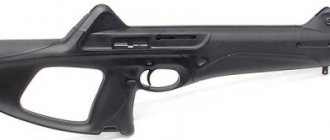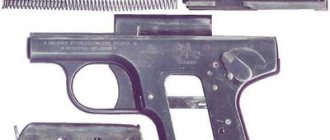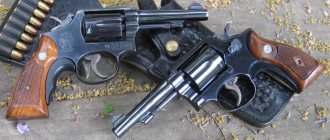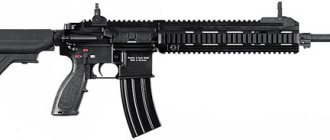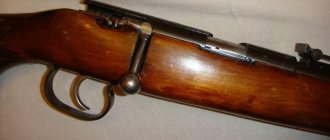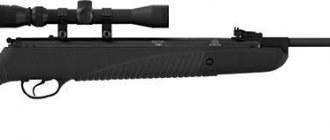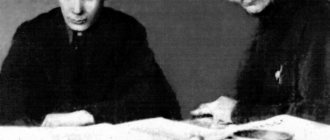MR-155 K is a new development of the Izhevsk Mechanical Plant. A reliable, high-precision rifle, distinguished by its affordable price and unusual design in the “Military” style.
The appearance of the MP-153 self-loading rifle at one time caused a lot of noise. On the Russian arms market, this was the only gun that allowed the use of any cartridges with a cartridge case length from 70 to 89 mm. The weapon received many awards and was produced for more than 10 years.
However, the arms market does not stand still. And the most perfect model can become even more perfect. As a result, the Izhevsk Mechanical Plant began producing a new model MP-155 K in 2010.
Review of the MP-155 K shotgun
MP-155 K, or rather, the entire MP-155 line is produced under the Baikal brand. Its development began at the peak of MP-153 sales. It was important to eliminate the shortcomings of the model, but at the same time maintain both the simplicity of the design and the reliability of the gun.
The main disadvantage of the self-loading rifle was its weight: at the time of studying demand, foreign analogues of this kind weighed from 3.1 to 3.3 kg, while the MP-153 weighed at least 3.6 kg without cartridges. In addition, insufficient balancing and the lack of options such as the ability to adjust the butt and the absence of a rail for an optical sight significantly reduced its competitiveness.
All these shortcomings were corrected in the new line. As for the MP-155 K specifically, not only designers, but also designers worked here. The new model has an original design in the “Military” style, designed specifically to attract a new generation of shooters who are quite demanding in the design of the weapons they use.
The main design elements of the MP-155 K are similar to the MP-155 mechanisms: gas engine, locking mechanism, impulse control, and so on. At the same time, differences appeared: the trigger mechanism on its base, the Weaver bar, and so on.
This video provides an overview of the MP-155K shotgun:
Advantages and disadvantages
MP-155 K is a smooth-bore self-loading shotgun designed for both hunting and sport shooting. A model is available with chambers of different lengths, which ensures the “omnivorous” nature of the gun: 76 and 70 for 12 gauge.
- The main shooting parameters for a hunting rifle remain accuracy, uniformity of shot distribution and sharpness. Rifles are zeroed from 35 m, and then from 50 m. The indicators of the MP-155 K fully comply with GOST, which requires: the upward deviation of the STP from the center does not exceed 150 mm;
- downward deviation no more than 50 mm;
- deviations to the right and left are 75 mm.
To be fair, not with every ammunition a rifle can show the desired result. Hunters recommend experimenting with several types of cartridges to find the one that gives the greatest accuracy.
- The gun is reloaded automatically due to the action of powder gases. The automatic gas outlet is adjustable, which allows you to achieve a sufficient level of reliability when using any shot.
- Food is supplied from a detachable box magazine. Its capacity depends on the caliber - 4–5 rounds.
- The receiver is similar to the MP-155 model: its upper part is made of aluminum alloy, the lower part is made of reinforced plastic. The latter includes a stock and a pistol grip. As the operating experience of the MP-155 shows, this option is more than reliable.
- The trigger is installed on its own base and is completely removable. Shooting is possible only with single shots, which meets the requirements for a hunting rifle. USM MR-155K is equipped with a non-automatic fuse. A special feature of the MP-155 K model is the bolt stop: it holds the bolt in the rear position when there are no cartridges in the magazine.
- The barrel is made of high quality rifle steel. The barrel channel, the chamber, as well as parts of the gas engine - the gas chamber and the piston - are chrome-plated. Thus, metal corrosion is prevented.
The barrels were originally designed to fire both lead and steel shot. The Izhevsk plant (also known for the MP-94 “Express”, MP-43KN, MP-133, MP-233, MP-18MN, “Sever”, MP-161K, MP-142K, MP-143 carbines) offers interchangeable chokes with different the value of the muzzle constriction, which increases the scope of use of the gun.
- The use of plastic in the design of the rifle made it possible to reduce its weight: without cartridges, all models in the line, including the MP-155 K, weigh around 3.5 kg.
- The rifle is equipped with an open sight, and the rear sight has 2 possible positions: with an open sight and a diopter sight. In addition, the MP-155 K is equipped with a Weaver rail, which allows you to install an optical sight and even an electronic guidance system on the gun. In this case, it is necessary to remove the removable handle to carry the rifle.
- The appearance of the product is much more aggressive and brutal than ordinary IZHMEKH rifles. Anodized aluminum and black plastic complement and emphasize the design in the Military style.
- Models are produced not only for right-handers, but also for left-handers - with a reloading handle and a window for ejecting cartridges on the right and left, respectively.
The disadvantages of the MP-155 K rifle are as follows.
- The mass, of course, is still far from ideal. It’s quite difficult to shoot offhand, and after 5-6 hours of walking the rifle seems too heavy.
- The non-adjustable stock creates noticeable discomfort.
- There is no possibility of switching between a detachable magazine and an under-barrel one.
- The design is designed for its user group. Experienced hunters tend to prefer sleeker, lighter models.
Photo of the MP-155 K shotgun
Purpose
- The MP-155 K was initially considered as a hunting rifle. High accuracy and the ability to shoot steel shot make the rifle a very profitable purchase for hunting medium-sized animals and large birds.
- The scope of application is expanded by the ability to install an optical sight. However, it is still not suitable for varminting.
- The aggressive design makes the gun promising as a means of self-defense: hitting with large shot from a distance of 20–35 m will stop any attacker. High accuracy ensures that at least 80% of the shot hits.
- This same indicator allows the rifle to be used for both sports and recreational shooting, in which high weight is an advantage, as it reduces recoil.
We'll talk about the special versions of the MP-155 K below.
Varieties
- MP-155 K is available for 12 gauge, but with different chamber lengths - 70 and 76 mm. This allows the use of cartridges with different case lengths.
- The model is available with different barrel lengths - 510 and 610 mm.
Trunk
The sighting bar became arched, rather than soldered along its entire length. This reduces the weight of the barrel, but creates a problem with attaching the strap - it has to be soldered using silver-containing solder. The main problem is not the cost, but the high melting point. After shortening the box, such a strap is the most obvious way to reduce the weight of the gun, which has been asking for a long time, and this was precisely the main problem of development. On the MP-153, the sighting bar was soldered with a single piece of iron using lead-tin solder and then processed by milling. This made it possible to obtain good straightness (although there were still problems). The newly chosen mounting option and its reliability are not yet clear. Most likely, this is the main stumbling block in the entire history of the appearance of the MP-155. After solving the problems with the strap, logically, there should be a change in the grade of steel of the barrel and an increase in its hardness. Due to this, the barrel can be made even lighter. By the way, it is the lighter barrel that improves the balance of the gun.
So, the sighting bar is steel, there are 9 posts on the bar. Outwardly, it looks like it is simply soldered, but on top of the bar there are 7 pins visible, with which the bar is attached to the barrel. How the pins themselves are attached to the barrel is not clear. According to rumors, there were other options. The quality of the guilloche plank on the examined specimen, applied with a rotating cutter, is somewhat worse than the classic “vibro-planed” 153rd. The width of the sighting rib is 6.8-6.6 mm on the MP-155 and 5.9 mm on the MP-153, i.e. the rib has become almost a millimeter wider. It is very possible that this is not the final version.
Late addition. I am holding in my hands a shotgun made in 2014 with an 89 mm chamber, a good nut and a high rubber recoil pad. Weighs 3.08 kg, barrel 71 cm with a nozzle protruding 2 cm weighs 1.02 kg, box 212 mm long with a window 87 mm. The length of the shutter is approximately 91 mm. As expected, the sight rail is simply soldered onto the silver with posts, no pins are visible on top. The outer diameters of the barrels of both guns are the same. But the method of applying guilloche has changed: now it is something similar to a notch on wood - diamonds formed by two intersecting rows of lines.
Specifications
The user qualities of the MP-155K shotgun are similar to the characteristics of the entire MP-155 line. Choke constrictions for the MP-155 K are offered for both lead and steel shot, the inserts are marked accordingly.
| Options | Parameter value | |
| Caliber | 12 | |
| Chamber length, mm | 70, 76 | |
| Barrel length, mm | 510, 610 | |
| Average maximum pressure of powder gases, MPa | 90/105 | |
| Choke constrictions, for lead shot, mm | C | 0,0 |
| IC | 0,25 | |
| M | 0,5 | |
| I.M. | 0,75 | |
| F | 1,0 | |
| XF | — | |
| Choke constrictions for steel shot | C | Expansion 0.2 |
| IC | Expansion 0.1 | |
| M | 0,2 | |
| I.M. | 0,3 | |
| F | 0,4 | |
| XF | 0,52 | |
| Butt and fore-end material | Reinforced plastic | |
| Gun weight, kg | 3.5-3.6 kg |
The weight of the gun is given without cartridges.
Design
The MP-155 K rifle consists of several main modules.
- Barrel with a gas chamber - the barrel is made of stainless steel, the bore and chamber are chrome-plated. The barrel is locked by a swinging cylinder: it is located in the bolt and engages with the barrel shank. The magazine tube is hollow and houses the return spring. An annular gas piston is located around the magazine tube - under the barrel. Gas exhaust automation can be adjusted, but this requires partial disassembly. There are swivels on the barrel and receiver.
The bolt is longitudinally sliding, locking occurs due to the wedge stop, which fits into a groove in the barrel coupling. The wedge is raised to the rear position using the bolt frame.
- The box with interceptor and under-barrel magazine consists of two parts: the upper one is made of anodized aluminum and the lower one is made of impact-resistant plastic. Magazine for 5 rounds, box type. The release lever is flat and located on the trigger guard. A limiter can be installed on the magazine.
- The moving system is a bolt carrier, a bolt with a wedge, a reloading handle and a piston that regulates the recoil speed of the moving parts. The speed regulator is mounted on the piston and includes a valve with ring, springs and adjusting nuts. This device allows the use of cartridges with different ballistic characteristics. In addition, using the regulator, you can compensate for the effects of temperature and humidity, releasing excess pressure of powder gases into the air.
The bolt stop allows all moving parts of the rifle to stop in the rear position at the moment when all the cartridges are expended.
- Return spring – located in the magazine tube, ensures automatic reloading of the rifle.
- The trigger mechanism is located on its own base, trigger type. The trigger is located inside the box casing and is a removable module. The mechanism is equipped with a non-automatic push-button safety blocking the trigger. It is located on the rear section of the safety bracket.
The gun has an open sight: the rear sight is adjustable horizontally, the front sight is adjustable vertically. It has 2 positions – for open sight and diopter. The rear sight is mounted in a removable handle for carrying the rifle. In addition, there is a Weaver rail: after removing the handle, you can attach an optical or collimator sight to the rifle.
- The stock, together with the pistol grip, is made of impact-resistant reinforced plastic.
- The handguard is of the ventilated type and is made of plastic.
The gun is compatible with all available choke tubes.
Shotgun MP-155K
Operating principle
The gun operates on the principle of a gas engine: after a shot, part of the powder gases is taken from the barrel, the energy of which is used to move the bolt frame and reload. Before loading the magazine, the weapon is put on safety.
The cartridges are placed through the window of the loading hopper, overcoming the resistance of the feeder spring, and are fixed in the magazine. If you need to put an additional cartridge into the chamber, turn on the cartridge interceptor mechanism by sliding the lever on the left side of the receiver back. Slide the bolt carrier and put it on delay. Place the ammunition on the feed elevator. Move the locking lever, but not all the way, but only by moving it. The bolt frame will return to its original position, and the barrel will be blocked.
If the cartridge interceptor mechanism is turned on, the gun will fire single shots.
To change the spring tension of a gas engine piston, the end of the choke wrench is used, which is shaped like an arc with a tooth at the end. It engages with a rectangular cutout in the piston nut. To facilitate and understand the essence of the process, colored marks are applied to the spring.
Principle of operation
MP-155 K is a self-loading rifle. This mechanism is based on the use of the pressure created by the powder gases. The barrel bore is connected to the gas chamber by gas outlet channels. The powder gas passing through them exerts sufficient pressure on the reloading mechanism. The available speed regulator allows you to reduce or increase gas pressure.
It is recommended to use the regulator only after zeroing - about 50-100 shots. The adjusting nut located on the piston is turned counterclockwise 1–2 turns with the lock released. Use a universal key for this. When firing heavy cartridges, turn the screw clockwise.
The mechanism of action can be described by the following diagram:
- When you press the trigger, the trigger hits the firing pin and acts on the retainer. The latter releases the interceptor, and the cartridge from the magazine is fed onto the tray;
- under the influence of powder gases, the piston with the bolt frame moves back, the bolt frame acts on the wedge and unlocks the barrel;
- the entire moving system is shifted back: in this case, the spent cartridge case is removed from the chamber and removed from the box. The hammer is cocked;
- the return spring forces the moving system to move forward: in this case, the tray with the cartridge rises and the cartridge ends up in the chamber;
- when the bolt returns to the forward position, the barrel is locked: due to the forward movement of the bolt frame with the piston, the wedge rises and enters the coupling recess. The next shot can be fired;
- after all the cartridges have been expended, the bolt stops in the rear position - thanks to the rear delay.
MP-155 K is designed for firing cartridges with lead and steel shot. However, the choke constrictions are not so universal: on the inserts intended for shooting with lead shot, there is a marking “Lead”, for steel shot - “Steel”. You can load the cartridges yourself, but you must adhere to the manufacturer’s recommendations and do not change the powder weight or shot weight.
Preference is given to cartridges with a plastic sleeve; it is not recommended to use cartridges with a metal sleeve.
It is allowed to use bullets with a diameter 0.2–0.3 mm smaller than the diameter of the barrel or choke. Caliber bullets made of hard materials - steel, brass - are prohibited.
Part I
History of gun development and design features
In all the years of production of the MP-153, only the lazy have not written about this Izhevsk self-loading machine. As usual, the gun was both praised and criticized, not forgetting to compare it with such old Soviet systems as MTs-21-12 and TOZ-87. Of course, there were comparisons with imported semi-automatic machines. And this is where an extremely careful and balanced assessment is required. After all, it is no longer a secret that imported weapons do not always objectively correspond to the manufacturer’s advertising statements, while domestic weapons naturally occupy far from the last positions on the Russian market.
The message about the test firing of 50 thousand rounds from one copy of the MP-153, carried out by Italian dealers of the Izhevsk semi-automatic device, has almost been forgotten. All the advantages and disadvantages of this gun, with which everyone hunts, have long been “worn out”. I saw “Murka” in all regions of the country, from the Caucasus to the Southern Kuriles, in the hands of villagers and heads of municipalities (the mayor of Aleksandrovsk-Sakhalinsky, Vladimir Fedorovich Nikitin, from 1999 to this day he hunts only with his personal MP-153 and rightly considers it an excellent weapon).
The fact remains that the gun, produced in 600,000 copies, continues to sell well in the domestic and foreign markets. And since last year, a modified lightweight version of the people’s favorite “Murka” - MP-155 - has gone into production. To obtain information from the original source, I managed to contact one of the developers of the gun, Alexander Igorevich Kalugin, now holding the position of Deputy Chief Designer of IZHMEKH, who told a lot of interesting things about the history of the gun and its design features. Some of this information appeared on the pages of magazines, but the reader will learn about much of it for the first time.
From MP-151 to MP-153 - How it all began
A. Kalugin says: “The first work on smoothbore self-loading at IZHMEKH was started on its own initiative at the end of 1996. Konstantin Evseev spent the evenings working on a possible design for a self-loading shotgun based on the IZH-81 pump-action shotgun that was then being produced. When almost all the drawings were ready, another inventor approached the plant with a proposal to start producing a self-loading gun of his design, also converted from IZH-81. The drawings were transferred to the design department: to evaluate the design, manufacturability and manufacturing feasibility. It was a 12/70 caliber gun. Then Konstantin showed his own developments to the department management. It was decided to conduct comparative tests, according to the results of which preference was given to Evseev’s design.
Konstantin Vladimirovich Evseev got a job at the plant after defending his diploma project in early 1996, and towards the end of the year I came to the plant for pre-graduation internship. I was asked to combine my studies with work in the department. We worked in neighboring groups and stayed late in the evenings after work, when almost no one was there. I was developing a reduced horizontal profile for my thesis project, and Kostya was working on self-charging. We often looked at what each of us was doing, discussed technical solutions and somehow quickly became friends. It is possible that when the decision was made to put Konstantin’s development into production and he was asked who he would like to see as an assistant, he named me.
We were transferred to the development group of Vitaly Petrovich Votyakov and were tasked with testing the design for production. The gun received the factory designation MP-151. The development was supervised by the deputy. chief designer for R&D Vladimir Petrovich Budanov and chief designer Alexander Usherovich Dorf himself. But we must thank them for the fact that Konstantin and I were given greater independence. As a result, preparations for production were carried out and they even managed to produce the first batch of MP-151 shotguns.
MP-153
In 1999, when preparations for production of the MP-151 were almost completed, an American dealer, Keith Burkrant, came to the plant. He was shown a new self-loading device. The American said that the future in the market of self-loading shotguns belongs to supermagnums of 12/89 caliber and it would be nice if we made such a shotgun instead of the MP-151. By that time, we already knew that the IZH-81 base would not allow us to create a durable gun chambered for the “ordinary” Magnum cartridge - 12/76, but here it is 12/89.
Konstantin proposed to completely redesign the design. And the management decided to take a risk. While preparations for the production of the MP-151 were in full swing, a new self-loading system was developed in parallel. The new design was tested just as preparation for production of the MP-151 was completed. No more than 100 copies of this model were produced. first qualifying batch.
Since the new gun was superior to the MP-151 in many characteristics, it was decided to prepare the production of a new model under the factory designation MP-153. ( The management did not take too many risks, entrusting the parallel development of a self-loading gun to more experienced designers with extensive experience in the department - they developed their version under the symbol MP-152, but did not keep up with the young designers who were ready to stay after working hours and use computers instead of drawing boards ) .
At the beginning of 2000, production of the MP-153 shotgun was prepared. Only 14 months passed from the start of its development (the first line on paper) to the release of the first gun. I note that before this, the plant had no experience in developing self-loading rifles, except for individual attempts that were made by designers no longer working in the department. This was Russia’s first self-loading gun of 12/89 caliber, and it worked reliably on the entire range of cartridges - from 12/70 to 12/89.
During development, we encountered various problems. For example, one of them is the lack of 12/89 cartridges in the country. The customer brought cartridges made in Italy. The quality of the cartridges left much to be desired. They simply did not fit into the chamber, were deformed and had pellet markings on the outer surface, and we were given the task that the gun should work with any cartridges.
With these cartridges, we encountered bouncing of the tray when firing due to recoil. Initially, the design did not have a holder and we did not quite understand why the Remington had a similar part near the tray. The gun worked similarly to a pump-action gun - the interceptor was released by the frame after some movement and the cartridge came out of the magazine onto the tray. But by the time the frame released the interceptor, the tray had time to jump and block the path of the cartridge. And then the shot occurs, the cartridge case flies out, the bolt comes forward, you press the trigger, but there is no shot. The cartridge did not remain in the magazine, and the chamber was empty. There was no high-speed shooting, and we did a lot of testing and testing before we found the reason. Moreover, this delay was floating, sometimes it was there, sometimes it wasn’t. And again, almost parallel to the beginning of production, the design is changed and a holder is introduced. At the same time, it was possible to solve the problem of safely unloading a gun.
On the Italian shotguns we have seen, there is a similar part that releases the interceptor when the hammer is released. Therefore, in order to unload the gun, you need to pull the trigger, pull the bolt twice (feed a cartridge into the chamber and then deflect it) and pull the trigger again. At the same time, more than once I myself observed random shots.
You can unload the gun by simply pressing the interceptor, but this is very inconvenient. On the MP-153, you can put the gun on safety, and, alternating between pressing the holder and jerking the bolt, unload the weapon without touching the trigger.
Recognized abroad
By the start of production of the MP-153 shotgun (2000), there were almost no foreign analogues. And our gun has received great recognition in the world - it has been awarded several diplomas, including being recognized as the gun of the year in the USA. It has been repeatedly subjected to various tests. For example, in Italy. Many people have heard that 50,000 rounds were fired there. The PRIMA ARMI company, which promotes the Baikal weapon in Italy, first conducted its tests on a small scale (about 10 shots), and then invited weapons journalists writing in Italy and manufacturers of sporting cartridges to conduct large tests of the gun. They took the first gun they came across from the purchased batch and started shooting at a very fast pace.
Only two comments were noted. First: the barrel became so hot during shooting that the solder flowed out and they removed the bar so that it would not hit the shooter if it was disconnected. Second: it is possible that the spring of the interceptor button was broken during cleaning and improper assembly. By the way, there is a video on YouTube of one Canadian user testing the MP-153 by throwing mud at it and bathing it in an ice hole.
In 2001-2002, many imported new products appeared: self-loading 12\89 caliber. These were good guns, but they did not show significant superiority over the MP-153 either in reliability, durability, or any performance characteristics.
In 2003, a separate production support group was created under my leadership. In total, from 2000 to 2012. About 600 thousand MP-153 rifles were produced, about half of which were exported.
Since 2008, the next generation of imported self-loading shotguns of 12/89 caliber began to appear. The main advantage of the new self-loaders is weight reduction. We also began to lose to the approaching Turks in the segment of 12/76 caliber shotguns, since due to the unification of 12/89 and 12/76 caliber shotguns, a 12/76 caliber shotgun had more weight than its competitors.
Therefore, at the end of 2010, it was decided to speed up work on the development of a new self-loading rifle to replace the MP-153. The main burden of development fell on Marat Shamilevich Sabirzyanov, who replaced me as group leader. Yesterday's students Vladimir Preobrazhentsev and Ekaterina Shishkina helped him. Although they did not come out of nowhere (in our group, with my participation, they had worked out some alternative designs before), they had to practically rearrange some components from scratch, working out a new design for the current production. The new gun was designated MP-155.
Disassembly
To care for the rifle - cleaning and lubrication - partial disassembly of the mechanism is sufficient. In this case, it is necessary to pay attention to individual details. So, when the wedge is disconnected from the bolt, the ball is released from the side groove of the wedge. The part is small and easy to lose.
It is highly undesirable to disassemble the regulator: the valve spring is compressed with great force, and it is almost impossible to reproduce this force at home.
Partial disassembly includes the following steps:
- unscrew the forend nut and remove it;
- using the handle, move the bolt back 10–20 mm and detach the barrel from the box;
- remove the charging handle, applying force perpendicular to the bolt axis;
- remove sequentially the piston, bolt frame, bolt with wedge, then return spring and ring with buffer;
- 2 pins that hold the trigger mechanism are knocked out of the box, and the last one is removed.
In this condition, the rifle is available for cleaning and lubrication.
- If repairs are necessary, complete disassembly of the gun is allowed, which includes the described manipulations, detaching the butt and disassembling the trigger.
- Further disassembly is permitted only in a weapons workshop. The rifle is assembled in the reverse order.
- For lubrication, use gun oil, a brush, a cleaning rod and clean wiping material. To remove heavy lead, a brass mesh or brush can be used.
MP-155 K is stored disassembled and discharged. Ammunition should be stored separately.
USM
The USM is now 40 g lighter than the 153, has a plastic body, the shape and arrangement of parts have changed significantly, although the kinematic diagram has practically remained the same. Parts from the 155th can no longer be used on the MP-153. The trigger pull on the MP-155 was 1.1 mm and 2 kg versus 2.2 mm and 1.7 kg for the MP-153, but here it is not possible to draw a global conclusion based on individual samples; many 153s had a stroke of about 5 mm or even more. It remains to note the magazine cutter, the presence of which will not hurt even those who never use it, and the new, very thick and complex combined (plastic-rubber) and not at all heavy butt plate. Moreover, on the very first guns, the end of the butt under the butt plate was cleverly cut out; later it became flat again, although the butt itself is shorter than on the MP-153.
Tuning
The design of the MP-155 K provides some opportunities for tuning. The choice of accessories depends on the purpose of the rifle.
- Replacing an open sight with a collimator or optical sight can hardly even be called tuning. And, by the way, the weight of the gun in this case becomes a plus, since there are no restrictions on the weight of the sight.
- It is also possible to install other devices: a muzzle gas compensator, for example, or an under-barrel flashlight.
- One of the popular solutions is to extend the magazine. For hunting, perhaps this improvement is useless. But for sports shooting, increasing the magazine capacity to 10 rounds is very appropriate.
The price and owner reviews for the Baikal MP-155 K (MP-155K) self-loading hunting rifle are given below.
Disassembled rifle MP-155 K
Reviews
Almost all owners of the MP-155 K note the high accuracy of the battle, regardless of how the shooting is carried out - with shot or bullets. A big plus is that the barrel does not overheat even during active shooting: excess powder gases are removed through recesses in the forend.
- The handguard is comfortable to grip. However, its material, plastic, is somewhat inconvenient: it slips out of sweaty palms.
- What is a clear drawback is the sharp edge of the receiver above the trigger: your finger rubs on it quite quickly.
Options and packaging
Upon receipt in the box you will see a gun with additional interchangeable handles.
If desired, an additional replacement unit can be added to the kit.
In the box you can also find instructions for use and a passport.
This model is good because you can put a spacer in it in order to change the direction of the shot or change the usual pistol grip.
An example of a possible gun configuration:
Analogs
- MP-155 K is a model from the MP-155 line. Most of the rifle’s components are similar to those of its “progenitor”. Another well-known “competitor” of the gun is the AKKAR Altay tk-222 smoothbore self-loading rifle.
- The closest competitors in the price sector for IZHMEKH rifles are Turkish semi-automatic rifles. Here you can point to the Escort PS from Hatsan or the Bronko Hades. The second model is a replica of an Italian model, while the first is an original development of a young Turkish enterprise.
MP-155 K is a semi-automatic smoothbore rifle, interesting, first of all, for its unusual appearance, developed taking into account the latest trends in design, and, of course, for the simplicity and reliability of the design.
A review of the MP-155K shotgun is given in this video:
